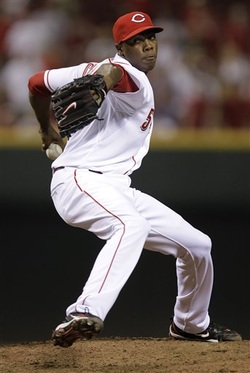
Quite simply, throwing 200 innings is more valuable than throwing 70. For instance, Orioles closer Jim Johnson lead all of baseball in saves (50), but only threw 68.2 innings and produced 2.3 WAR. White Sox starter Gavin Floyd threw 168 innings, went a mediocre 12-11, had a 4.29 ERA and still managed to produce 2.3 WAR. As the evidence would have it, one of the best relief pitchers in baseball was just as a valuable as a league average starter. There are myriads of other examples that reflect the same notion that there is more value in innings than in closing. Even though relief pitchers throw innings of higher stress and leverage, that value just does not add up to what starting pitchers accumulate throughout the season. This realization of where the true value is has caused clubs to carry out their own experiments with their young pitchers. During the World Series runs of the 2006 Cardinals and 2008 Rays, Adam Wainwright and David Price were utilized as late-inning weapons while also gaining invaluable big league experience. However, in the following years, each of their respective clubs realized their potential as starters and let them mature into the aces they have become today. For additional evidence, Chris Sale's evolution from bullpen arm to legitimate frontline starter further exemplifies the possible benefit of such a move. However for every success, there have also been some been blatant mistakes (Daniel Bard, Joba Chamberlain, Neftali Feliz) in pushing this transition on these pitchers. Even after returning to the bullpen, Daniel Bard and Joba Chamberlain have been unable to recapture their previous dominance. What differentiates the successes and failures? Simply, it boils the ability to throw strikes.
Among the first legendary fastball pitchers was "Rapid Robert," Bob Feller . Feller claimed he threw 108 mph in his prime and in addition to throwing hard, he also had the reputation of having little idea where that ball was going. Feller posted poor walk numbers throughout this career, even leading the league on four separate occasions. How does this relate to Chapman? While you would not expect a guy who can throw over 100 to be a control artist, Chapman made serious progressions with his control in 2012. After a 2011 season in which he walked 41 batters in 50 innings (7.38 BB/9), he walked 18 fewer batters in 71.2 innings of work (2.89 BB/9). The thing most in common with the failed relievers turned starters is that most of them struggled with their control. For example, Bard had a 3.5 BB/9 and just last year, Neftali Feliz had a poor 4.3 BB/9 rate before moving into the rotation. If these pitchers could not stop walking batters as relievers, why would that change while dealing with diminished stuff and stamina as starters? Hint: it wouldn't. Pitchers such as Wainwright (2.6 BB/9) and Price (2.1 BB/9), who could control their pitches as relievers, have suggested that control over sheer force is more likely to lead to success in such a transition.
Also, another matter to take into account would be how much time was given to each pitcher in order to prepare for the upcoming season. A pitcher who knows immediately that he will be a starting pitcher the following year would in theory, have more time to get into "starting pitcher" shape so his body could handle the inning increase. For instance, Daniel Bard was in limbo for much of the offseason last year. Would he replace Jonathan Papelbon as closer or would he indeed become a starting pitcher? Not until December 29th (the day Andrew Bailey was acquired to become the closer) was it clear that Bard would transition to the rotation. Although this is just speculation, the late decision could very well have any ruined Bard's chance to condition well enough in time for the season. In addition to this increased time and preparation, Chapman also has the benefit of starting ballgames before. Chapman started in 63 of his 76 games in Cuba's Professional League, Serie Nacional as well as 13 games for triple-A affiliate Louisville. However, this is the case with most pitchers to begin with, since most make the transition into the bullpen during the travels throughout the minor leagues. Regardless, Chapman has all the necessary tools: experience, command of his stuff, time to prepare,and a flat out dominant arm that should be ready to start for the Reds come 2013.
-Aidan Flynn
 RSS Feed
RSS Feed